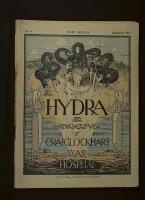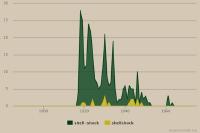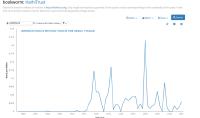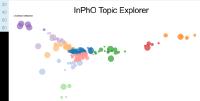Browse Exhibits (4 total)
British War Hospitals, War Poetry, and Shell-shock

British propaganda represented the First World War as a mere skirmish which the British Empire would win by Christmas. Instead, over a million men died in battle over four years and three months, a war which progressed at a crawl, deep in muddy trenches and sprawls of barbed wire which laced No-Man’s Land. News coverage sanitized the particulars of warfare, as did brightly colored army recruiting posters, but the long lists of the dead told a different story. In the trenches, the war poets responded: while these writers would be grouped together, the tenor of their work differed greatly.
Contemporary of the Bloomsbury group and minor poet Rupert Brooke would die of sepsis before the war was over, but his sonnet sequence promoted stirring English pride. His sonnet The Soldier would be read in Saint Paul’s Cathedral on Easter Sunday, 1915. Brooke injects the lines with a patriotic theme: “If I should die, think only this of me: / That there's some corner of a foreign field / That is for ever England.” (Brooke 1-3).
Other war poets were less rosy in their depictions of death and dying on the battlefield. In contrast to Brooke’s vision of dying for his country, Siegfried Sassoon, Wilfred Owen, Mary Borden, and Isaac Rosenberg (among other war poets) depict the effects of war on the human body and psyche in unflinching detail. While their styles differ, reflecting their various educational backgrounds and investment to poetry, their themes reflect widespread disillusionment with their place on the Western front.
Case Study 1: Analyzing Shellshock Using Project ArcLight via the Media History Digital Library

In my first case study, I tested the Arclight search available through the Media History Digital Library through a variety of terms, including "war" and "Hollywood" alongside "shellshock." I focus on the Media History Digital Library, a “non-profit initiative dedicated to digitizing collections of classic media periodicals that belong in the public domain for full public access" because my overall project deals with popular culture representations of shellshock, and this library includes film journals and publications. It is also notable that they include "digital scans of hundreds of thousands of magazine pages from thousands of magazine issues from 1904 to 1963," which falls within the dates of this project's scope (1914-1939). This form of data visualization and analysis appealed to me, as I hope to make the history of shell-shock in popular media and culture more visible in my archive project.
Case Study 2: HathiTrust Bookworm Timeline Modelling

In my next case study, I turn to HathiTrust and its Bookworm tool to model how its timeline tool can be used to study shellshock across an 18-million volume collection.
I chose HathiTrust as they offer a number of open-access texts, which can be downloaded using their collection tool, into comma separated value tables. As a repository, HathiTrust includes content digitized via Google Books and the Internet Archive digitization initiatives, as well as content digitized locally by libraries.
HathiTrust's Bookworm tool allows researchers to search the entire collection for terms across time. Unlike Project Arclight, this project is made up of eighteen million volumes and counting, so I had a much larger sample set with which to experiment.
Case Study 3: Topic Modeling Shellshock Across 4 Corpora With LDA Topic Explorer Visualizations

I turn to HathiTrust and its analytics center to model how its tools can be used to study shellshock across 4 corpora: a 100-volume corpus of medical periodicals, a 189-volume corpus of non-medical peridicals, across a small-scale (8-volume) corpus of war poetry, which I compare with another small-scale (7-volume) corpus of novels by Mary Borden.
After experimenting with Bookworm in my prior case study, I delved into HathiTrust’s Analytics Research Center, where I used HathiTrust’s freely available InPho Topic Explorer, along with documentation for its use.
This tool draws upon a topic modeling technique known as Latent Dirichlet Allocation, which allows a researcher to extract and cluster topics from a workset or corpus.
Across this case study, I model some potential means of large-scale reading for shellshock across popular culture and war poetry.